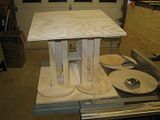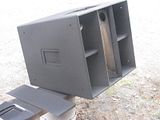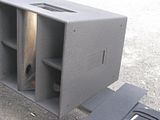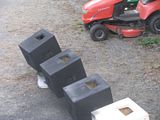I went with a one piece for the back and side brace. It is not glued up but everything is there except a few things.


Don't you just love jigs and templates.





You're biamping with piezos? What crossover freq/slope? What passive components are you using (in other words, does the passive crossover get bypassed when you biamp?)J_Dunavin wrote:I'm bi amping my four pack and love it. I'm interested to see how you'll like all six of yours.
Most people bi-amp so they can use active components and get a bit more output in high volume situations. It would be a waste to use passive components while bi-amping... unless you're using ribbons that require a passive x-over.sstillwell wrote:You're biamping with piezos? What crossover freq/slope? What passive components are you using (in other words, does the passive crossover get bypassed when you biamp?)J_Dunavin wrote:I'm bi amping my four pack and love it. I'm interested to see how you'll like all six of yours.
Scott
Yeah, that's what an active crossover does. Ribbons must be run with a passive filter, "ANY other HF component" doesn't, as active will work fine.sstillwell wrote: Piezos won't care much, but ANY other HF component needs protection against LF...not just ribbons.
Scott
Unless you're just plugging things in willy-nilly and crossing your fingers hoping that it works, you don't need to add a capacitor. I pay attention when I wire things. If you're making speakers for an AV club at a high school, that's a different story.sstillwell wrote: It's also fairly common to leave at least a capacitor in series with the HF components to protect against being inadvertently wired to a LF or full-range signal.
GirlyHandedDog wrote:Yeah, that's what an active crossover does. Ribbons must be run with a passive filter, "ANY other HF component" doesn't, as active will work fine.sstillwell wrote: Piezos won't care much, but ANY other HF component needs protection against LF...not just ribbons.
Scott
Unless you're just plugging things in willy-nilly and crossing your fingers hoping that it works, you don't need to add a capacitor. I pay attention when I wire things. If you're making speakers for an AV club at a high school, that's a different story.sstillwell wrote: It's also fairly common to leave at least a capacitor in series with the HF components to protect against being inadvertently wired to a LF or full-range signal.
|
|